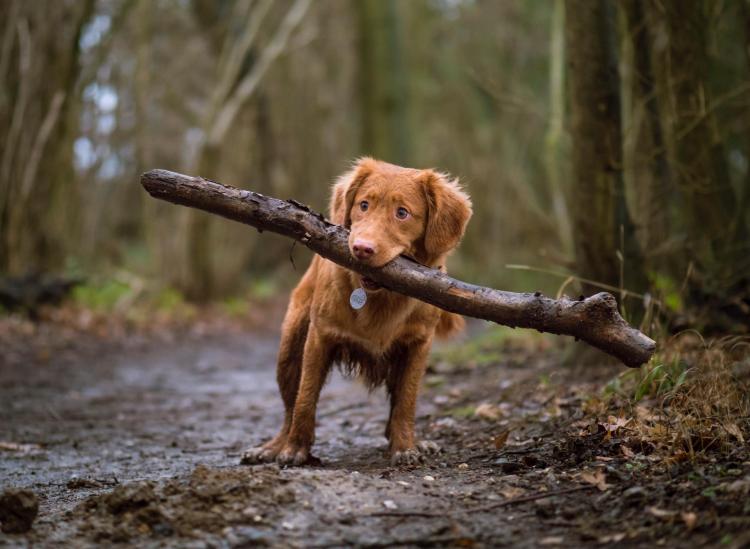This Is Why Your Dog Does So Many Weird Things

Unsplash / Jamie Street
We love our pups as much as the next person, but we have to admit that these four-legged fur balls act like complete weirdos sometimes. From eating grass to rolling in poop, it’s often hard to understand why dogs do the weird things that they do — especially since they can’t audibly explain themselves. We’re aiming to put an end to this mystery by disclosing the real reason behind five of the strangest dog behaviors that you’ve likely seen from your pooch.
1. Chasing Their Tail
You’ve likely witnessed your pooch going round in circles chasing after her tail at least once in her lifetime. There can be various explanations for this behavior, some more serious than others. If you have a puppy who occasionally chases her tail, it may be a sign of boredom. Puppies have a lot of energy so they tend to get bored easily and chasing their tails can offer a fun distraction and a way to blow off steam.
If you have an older dog, she might be chasing her tail because she knows that it’ll get a reaction out of you and she likes the attention. But if your pooch chases her tail multiple times a day, it could be a sign of concern that requires a vet visit. Sometimes dogs chase their tails because of worms, fleas or other medical issues.
2. Eating Grass
It’s an all too familiar scene: You’re on a walk surrounded by luscious green grass and the moment that you let your pup off the leash, he starts to eat it. But why? You may have heard the rumor that dogs eat grass when they’re missing essential nutrients from their diet, but this theory isn’t necessarily backed by science. Instead, your pup might enjoy a mouthful of grass simply because it tastes good. Remember, they also like dirty socks and the occasional scrap from the trash.
Undomesticated dogs were natural omnivores, meaning that they ate both plant food and meat, so it’s only natural that even domesticated pups enjoy the occasional mouthful of greens. Your dog might also be munching on grass as a remedy for gas or an upset stomach since eating grass can help stimulate vomiting. But you generally shouldn’t be concerned about your dog’s taste for greenery unless you notice that he’s munching on grass more than usual or if this behavior is accompanied by lethargy and/or unexplained weight loss.
3. Butt-Sniffing As A Greeting Method
As pup
But why do dogs choose to sniff each other’s rear ends? Why not another part of their body? Well, it turns out that dogs have two small sacs inside their rectum called the anal glands. These sacs secrete a substance with a smell that’s unique to each dog, so pups can quickly tell a lot about each other simply by sniffing their rears, even whether or not they’ve met before.
4. Howling
vYou might think that your Chihuahua has gone mad when she raises her snout to the roof and starts howling — is she really channeling her inner wolf right now? But it turns out that this sustained outcry is just a long-distance doggie telephone call. Like wolves and coyotes, dogs howl when they’re searching for other canines or responding to what they perceive to be another pup calling from a distance. Domesticated dogs often tend to howl in response to sirens or alarms because they confuse these high-pitched sounds with another dog’s attempts to communicate.
5. Sleep Twitching
Dogs dream just
RELATED
How To Decide If You Should Let Your Pup Sleep In Your Bed
9 Dog Breeds That Are Super Easy To Train
These Celebrity Dogs Are Almost As Famous As Their Owners











